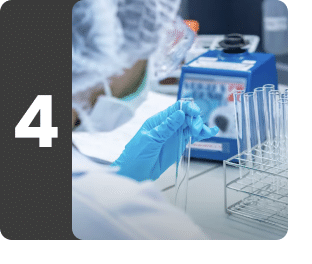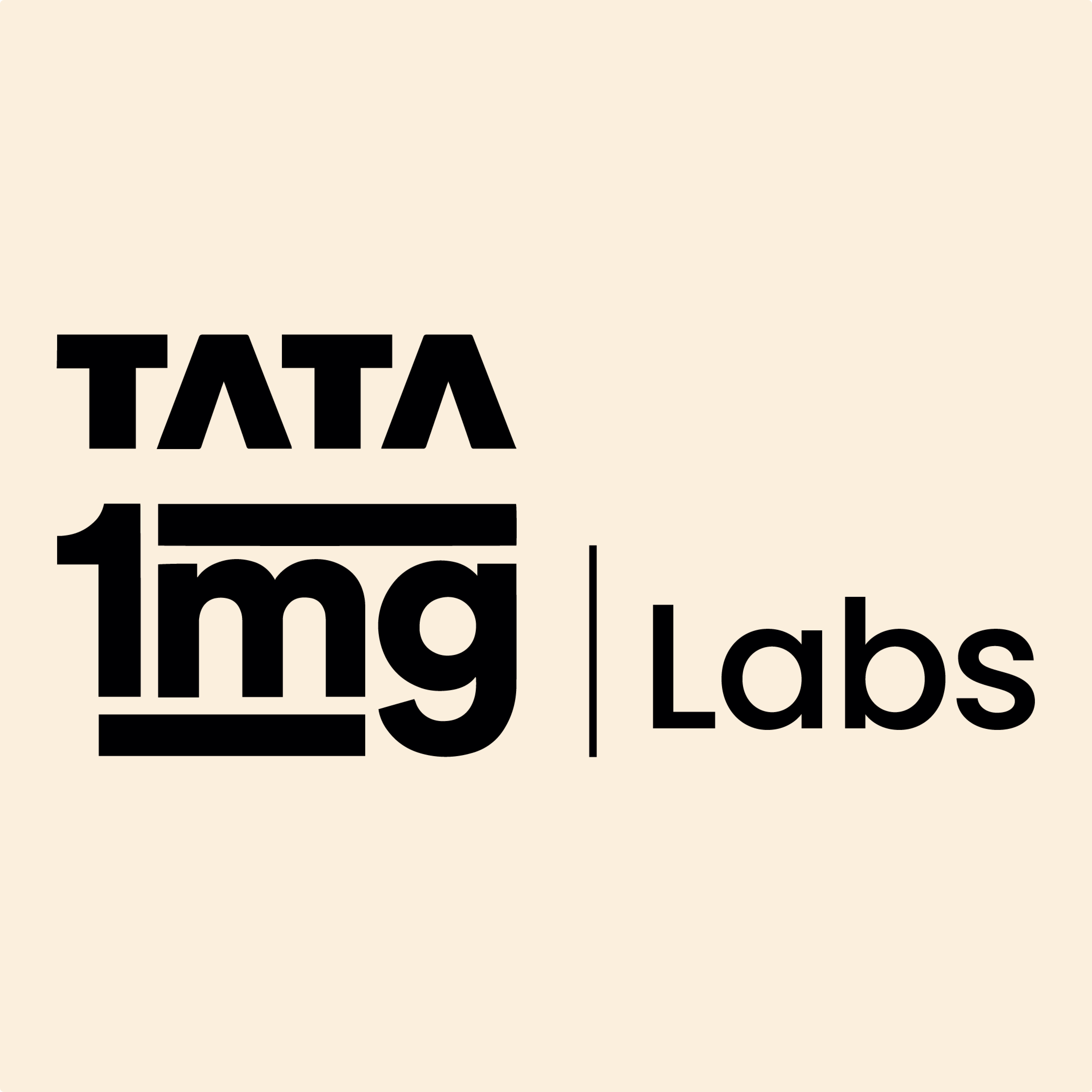
Thalassemia Screening Checkup
Understanding Thalassemia Screening Checkup
What is Thalassemia Screening Checkup?
The Thalassemia Screening Checkup comprises a group of blood tests that help diagnose and monitor thalassemia, a genetic blood disorder characterized by the production of defective hemoglobin. This test helps evaluate parameters like complete blood counts, hemoglobin variants, and iron levels, which are essential for diagnosing and managing the condition.
Thalassemia is a genetic blood disorder that affects the normal production of hemoglobin (a protein in red blood cells that carries oxygen). Individuals with thalassemia have fewer healthy red blood cells and less hemoglobin, which causes anemia and other health problems. There are two types of thalassemia, alpha and beta, depending on the proteins needed to make hemoglobin. The condition can range from mild to severe, with some individuals having only mild symptoms, while others may need regular blood transfusions and ongoing medical care.
The Thalassemia Screening Checkup offers the Hemoglobin High-Performance Liquid Chromatography (Hb HPLC) test, Complete Blood Count (CBC) test, Peripheral Smear Examination, and Serum Iron Studies Comprehensive. Together, these tests provide a comprehensive assessment to confirm a thalassemia diagnosis.
Consider getting tested with the Thalassemia Screening Checkup in the following situations. If there is a known family history of thalassemia or other hemoglobinopathies. If symptoms such as fatigue, weakness, pale skin, etc. indicate anemia. If routine blood tests like CBC show abnormalities in red blood cells. As part of prenatal and newborn screening. If anemia does not respond to iron supplementation, suggesting a non-iron deficiency cause.
The Thalassemia Screening Checkup helps confirm the diagnosis of thalassemia and distinguish it from other forms of anemia. Also, it helps diagnose other hemoglobinopathies like sickle cell anemia etc. Additionally, this test helps determine the severity and type of thalassemia, monitors treatment response, determines the need for medical interventions like blood transfusion, and identifies potential complications like iron overload, which can occur due to frequent blood transfusion.
Overnight fasting is preferred, along with a few special preparations that need to be considered before undertaking the Thalassemia Screening Checkup. However, these preparations may vary depending on the individual test included in this package. Also, let your doctor know about any medications or supplements you're taking, as some of them might affect the results, and you may need to adjust or pause them before the test.
Lab test results may vary across laboratories. Abnormal test results require an expert interpretation. Therefore, never try to self-medicate at home based solely on these results. Always consult a doctor for a proper understanding of the test results, as the insights from this test help doctors assess the condition and determine appropriate treatment plans.
What is Thalassemia Screening Checkup used for?
The Thalassemia Screening Checkup is done:
- To identify the presence and the type of thalassemia in symptomatic individuals.
- To determine if an individual is a carrier of thalassemia traits (genes), which is important for family planning.
- To distinguish thalassemia from other types of anemia, such as iron deficiency anemia.
- As a part of prenatal screening to assess the risk of thalassemia in unborn children when parents are known carriers.
- To monitor hemoglobin levels and overall health in individuals with thalassemia.
- To help guide informed treatment decisions in individuals diagnosed with thalassemia.
What does Thalassemia Screening Checkup measure?
Contains 28 testsThe Thalassemia Screening Checkup includes a range of blood tests namely, Hemoglobin High-Performance Liquid Chromatography (Hb HPLC) test which tells about different variants of hemoglobin and helps identify the abnormal variant (e.g., HbA2, HbS etc.) and its proportion in the blood. The Complete Blood Count (CBC) test provides a holistic view of blood health. CBC test helps assess the overall health of the blood and identify signs of anemia, which is common in thalassemia. The Peripheral Smear Examination test looks at the shape and appearance of red blood cells, helping doctors identify any abnormalities linked to thalassemia. The Serum Iron Studies Comprehensive, which includes tests for ferritin, iron, total iron binding capacity (TIBC), unsaturated iron binding capacity (UIBC), and transferrin saturation, is key for assessing iron metabolism. These tests help doctors diagnose different types of thalassemia, track its progress, and create the right treatment plan, such as iron supplements or blood transfusions, to manage the condition and related issues.

Hemoglobin HPLC / Electrophoresis
An Hemoglobin HPLC / Electrophoresis test is used to identify and quantify different types of hemoglobin in the blood to diagnose and monitor specific blood disorders. Different types of hemoglobin are Adult type (HbA2), Fetal type (HbF), Hemoglobin S (HbS), Hemoglobin C (HbC), and Hemoglobin E (HbE), etc.
Normal types of hemoglobin include:
- Hemoglobin (Hgb) A: The most common type of hemoglobin in healthy adults
- Hemoglobin (Hgb) F: Fetal hemoglobin, which is found in unborn babies and newborns. HgbF is replaced by HgbA shortly after birth.
A deranged level of HgbA or HgbF might indicate certain types of anemia.
Abnormal types of hemoglobin include:
- Hemoglobin (Hgb) S: This type of hemoglobin is found in sickle cell anemia, an inherited disorder that causes the body to make stiff, sickle-shaped red blood cells. Sickle cells can get stuck in the blood vessels, causing severe pain, long-term infections, and other complications.
- Hemoglobin (Hgb) C: This type of hemoglobin is associated with hemolytic anemia that develops when your red blood cells are destroyed more easily than normal red blood cells or have a shorter life span than normal red blood cells.
- Hemoglobin (Hgb) E: This type of hemoglobin is mainly found in people of Southeast Asian descent and may be associated with mild anemia or no symptoms.
- Hemoglobin (Hgb) D: Hb D disease (HbDD) is characterized by mild hemolytic anemia and mild to moderate splenomegaly. Hb D Punjab occurs with the most significant prevalence in Gujarat and Sikhs of Punjab.
Know more about Hemoglobin HPLC / Electrophoresis

CBC (Complete Blood Count)
The CBC (Complete Blood Count) test measures the number of red blood cells (RBCs), white blood cells (WBCs), and platelets. Each of these blood cells performs essential functions–RBCs carry oxygen from your lungs to the various body parts, WBCs help fight infections and other diseases, and platelets help your blood to clot. Therefore, determining their levels can provide significant health information. A CBC test also determines the hemoglobin level, a protein in RBC that carries oxygen from the lungs to the rest of your body. Evaluating all these components together can provide important information about your overall health.
Know more about CBC (Complete Blood Count)
Differential Leukocyte Count
- Differential Basophil Count
- Differential Neutrophil Count
- Differential Lymphocyte Count
- Differential Monocyte Count
- Differential Eosinophil Count
There are five types of WBCs: neutrophils, lymphocytes, monocytes, eosinophils, and basophils. A Differential Leukocyte Count test measures the percentage of each type of WBC in the blood. Leukocytes or WBCs are produced in the bone marrow and defend the body against infections and diseases. Each type of WBC plays a unique role to protect against infections and is present in different numbers.
This further contains
Red Blood Cell Count
The Red Blood Cell Count test measures the total number of red blood cells in your blood. RBCs are the most abundant cells in the blood with an average lifespan of 120 days. These cells are produced in the bone marrow and destroyed in the spleen or liver. Their primary function is to help carry oxygen from the lungs to different body parts. The normal range of RBC count can vary depending on age, gender, and the equipment and methods used for testing.
Hb (Hemoglobin)
An Hb (Hemoglobin) test measures the concentration of hemoglobin protein in your blood. Hemoglobin is made up of iron and globulin proteins. It is an essential part of RBCs and is critical for oxygen transfer from the lungs to all body tissues. Most blood cells, including RBCs, are produced regularly in your bone marrow. The Hb test is a fundamental part of a complete blood count (CBC) and is used to monitor blood health, diagnose various blood disorders, and assess your response to treatments if needed.
Platelet Count
The Platelet Count test measures the average number of platelets in the blood. Platelets are disk-shaped tiny cells originating from large cells known as megakaryocytes, which are found in the bone marrow. After the platelets are formed, they are released into the blood circulation. Their average life span is 7-10 days.
Platelets help stop the bleeding, whenever there is an injury or trauma to a tissue or blood vessel, by adhering and accumulating at the injury site and releasing chemical compounds that stimulate the gathering of more platelets. A loose platelet plug is formed at the site of injury and this process is known as primary hemostasis. These activated platelets support the coagulation pathway that involves a series of steps, including the sequential activation of clotting factors; this process is known as secondary hemostasis. After this step, there is a formation of fibrin strands that form a mesh incorporated into and around the platelet plug. This mesh strengthens and stabilizes the blood clot so that it remains in place until the injury heals. After healing, other factors come into play and break the clot down so that it gets removed. In case the platelets are not sufficient in number or not functioning properly, a stable clot might not form. These unstable clots can result in an increased risk of excessive bleeding.
Total Leukocyte Count
The Total Leukocyte Count test measures the numbers of all types of leukocytes, namely neutrophil, lymphocyte, monocyte, eosinophil, and basophil, in your blood. Leukocytes or WBCs are an essential part of our immune system. These cells are produced in the bone marrow and defend the body against infections and diseases. Each type of WBC plays a unique role to protect against infections and is present in different numbers.
Hematocrit
The Hematocrit test measures the proportion of red blood cells (RBCs) in your blood as a percentage of the total blood volume. It is a crucial part of a complete blood count (CBC) and helps in assessing your blood health. RBCs are responsible for carrying oxygen from the lungs to different parts of the body. The hematocrit test provides valuable information about your blood's oxygen-carrying capacity.
Higher-than-normal amounts of RBCs produced by the bone marrow can cause the hematocrit to increase, leading to increased blood density and slow blood flow. On the other hand, lower-than-normal hematocrit can be caused by low production of RBCs, reduced lifespan of RBCs in circulation, or excessive bleeding, leading to a reduced amount of oxygen being transported by RBCs. Monitoring your hematocrit levels is essential for diagnosing and managing various blood-related disorders.
Mean Corpuscular Volume
The Mean Corpuscular Volume test measures the average size of your red blood cells, which carry oxygen through your body. This test tells whether your RBCs are of average size and volume or whether they are bigger or smaller.
Mean Corpuscular Hemoglobin
An MCH test measures the average amount of hemoglobin in a single red blood cell (RBC). Hemoglobin is an iron-containing protein in RBCs, and its major function is to transport oxygen from the lungs to all body parts. This test provides information about how much oxygen is being delivered to the body by a certain number of RBCs.
Mean Corpuscular Hemoglobin Concentration
An MCHC test measures the average amount of hemoglobin in a given volume of RBCs. MCHC is calculated by dividing the amount of hemoglobin by hematocrit (volume of blood made up of RBCs) and then multiplying it by 100.
Absolute Leucocyte Count
- Absolute Eosinophil Count
- Absolute Neutrophil Count
- Absolute Basophil Count
- Absolute Monocyte Count
The Absolute Leucocyte Count test measures the total number of white blood cells (leucocytes) in the given volume of blood. It examines different types of white blood cells such as neutrophils, lymphocytes, monocytes, basophils and eosinophils. These cells tell about the status of the immune system and its ability to fight off infections and other conditions like inflammation, allergies, bone marrow disorders etc.
This further contains
Mean Platelet Volume
An MPV test measures the average size of the platelets in your blood. Platelets are disk-shaped tiny cells originating from large cells known as megakaryocytes, which are found in the bone marrow. After the platelets are formed, they are released into the blood circulation. Their average life span is 7-10 days.
Platelets help stop bleeding whenever there is an injury or trauma to a tissue or blood vessel by adhering and accumulating at the injury site, and by releasing chemical compounds that stimulate the gathering of more platelets. After these steps, a loose platelet plug is formed at the site of injury, and this process is known as primary hemostasis. These activated platelets support the coagulation pathway that involves a series of steps including the sequential activation of clotting factors; this process is known as secondary hemostasis. After this, there is a formation of fibrin strands that form a mesh incorporated into and around the platelet plug. This mesh strengthens and stabilizes the blood clot so that it remains in place until the injury heals. After healing, other factors come into play and break the clot down so that it gets removed. In case the platelets are not sufficient in number or are not functioning properly, a stable clot might not form. These unstable clots can result in an increased risk of excessive bleeding.
PDW
The PDW test reflects variability in platelet size, and is considered a marker of platelet function and activation (clot formation in case of an injury). This marker can give you additional information about your platelets and the cause of a high or low platelet count. Larger platelets are usually younger platelets that have been recently released from the bone marrow, while smaller platelets may be older and have been in circulation for a few days. Higher PDW values reflect a larger range of platelet size, which may result from increased activation, destruction and consumption of platelets.
RDW CV
The RDW CV test which is part of red cell indices, helps identify characteristics of red blood cells. RDW (red cell distribution width) measures the variations in the sizes of red blood cells, indicating how much they differ from each other in a blood sample. RDW is expressed as RDW-CV, a coefficient of variation. A higher RDW may suggest more variation in red cell sizes, while a lower RDW indicates more uniform red cell sizes.

Peripheral Smear Examination
The Peripheral Smear Examination test is performed to check the characteristics of blood cells including:
- Red blood cells (RBCs)
- White blood cells (WBCs)
- Platelets
By placing the blood sample on a specifically treated slide, these blood components are analyzed under a microscope for their shape, size, and number. Any irregularity in these cells indicates blood disorders or abnormality, the presence of parasites in the blood, etc. This test is also a beneficial tool in monitoring a blood disease or deciding whether a certain medication or therapy is working effectively or not.
Know more about Peripheral Smear Examination

Serum Iron Studies Comprehensive
The Serum Iron Studies Comprehensive package measures the level of iron in the body. It comprises a series of blood tests, including serum iron test that helps to evaluate iron level, total iron binding capacity (TIBC) test that helps to assess the ability of the body to transport iron in the blood, unsaturated iron binding capacity (UIBC) test that reflects binding of iron with transferrin, which is the main protein that binds with iron, transferrin saturation test that checks how many places on the transferrin that can hold iron are doing so, and ferritin test that detects ferritin protein in the blood and helps determine how much iron is stored in your body.
Know more about Serum Iron Studies Comprehensive
Serum Ferritin
The Serum Ferritin test measures the concentration of ferritin in the blood. Ferritin is a protein found in cells, particularly in the liver, spleen, and bone marrow, that stores iron in a soluble or nontoxic form. When the body needs iron for essential functions like producing red blood cells and carrying oxygen, it releases iron from ferritin into the blood.
The Serum Ferritin test provides valuable information about the body's iron storage levels. Low ferritin levels may indicate iron deficiency, a condition where the body lacks enough iron to function properly. In contrast, elevated ferritin levels can indicate iron overload, a condition known as hemochromatosis. Iron overload can lead to organ damage if not adequately managed, making early detection crucial.
The Serum Ferritin test is a critical tool for assessing iron status, diagnosing iron deficiency anemia, monitoring treatment progress, detecting other iron-related disorders, and maintaining overall health.
Total Iron Binding Capacity
The Total Iron Binding Capacity test measures the ability of your blood to bind and transport iron, and therefore reflects your body's iron stores. TIBC correlates with the amount of transferrin, a protein, in your blood, that helps bind iron and facilitates its transportation in the blood. Usually, about one-third of the transferrin measured is being used to transport iron, and this is called transferrin saturation.
Iron, Serum
An Iron, Serum test determines iron levels in the blood and can help diagnose conditions like anemia, or iron overload in the body. People usually suffer from low iron levels in the blood if they prefer a diet that has low iron content, or if their body has trouble absorbing the iron from the foods or supplements they intake. Low iron levels can also occur due to intense blood loss or even during pregnancy. Similarly, an excess amount of iron in the blood can occur due to over-intake of iron supplements, blood transfusions, or if you are suffering from a condition called hemochromatosis (a rare genetic disorder that causes too much iron to build up in the body or cause problems in the body to remove excess iron).
Therefore, doctors often suggest an Iron, Serum to help check the status of your iron level, get valuable information about your nutritional well-being, detect potential health issues (if any), and take timely preventive measures.
Unsaturated Iron Binding Capacity
An Unsaturated Iron Binding Capacity test determines the reserve capacity of transferrin, i.e., the portion not yet saturated with iron. The iron-binding capacity of our body can be segregated into two parts – Total Iron Binding Capacity (TIBC) and Unsaturated Iron Binding Capacity (UIBC). UIBC refers to the capacity of transferrin, a protein that transports iron, to bind with additional iron. In easy terms, it represents the available "slots" on transferrin to carry iron molecules. Unlike iron saturation, which assesses the occupied slots, UIBC measures the unoccupied ones.
Transferrin Saturation
The Transferrin Saturation test determines an individual’s iron status by using the ratio of serum iron concentration and total iron binding capacity (TIBC) as a percentage. The test tells us how much iron in the blood is bound to transferrin, the main protein in the blood that binds to iron and transports it throughout the body. Under normal conditions, transferrin is one-third saturated with iron, so about two-thirds of its capacity is held in reserve. This test is often employed alongside others to evaluate iron levels and diagnose conditions like iron deficiency anemia if transferrin saturation is low or hemochromatosis (an iron overload disorder) if transferrin saturation is higher than normal.
Frequently Asked Questions about Thalassemia Screening Checkup
Q. What is thalassemia, and why is screening important?
Q. What is the Thalassemia Screening Checkup?
Q. What blood tests indicate thalassemia?
Q. How often should I get the Thalassemia Screening Checkup?
Q. What are the risks associated with the Thalassemia Screening Checkup?
Q. What do the abnormal test results mean?
Q. Can thalassemia be cured?
Q. What is the difference between alpha and beta thalassemia?
Q. What is the role of blood transfusions in thalassemia treatment?
Q. How does Tata 1mg ensure accurate lab test results?
Book a Thalassemia Screening Checkup test at home near me





Other tests









